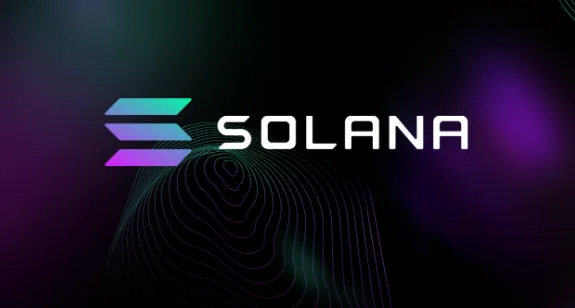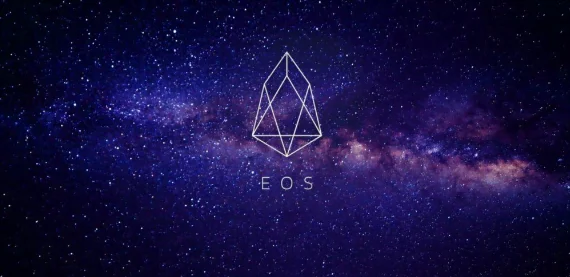Solana, Polygon, Stellar, EOS, and Tron blockchain networks have been reviewed in this article to show why they are the top choice for investors owing to their various characteristics.

A blockchain is a distributed public ledger that records data in a digital form. It is a distributed database that groups transactions into blocks that are safely connected. A network of computers known as nodes verifies the entered data.
The blockchain is responsible for recording and maintaining a record of all the data exchanges. This record is referred to as a ledger, and the data pertaining to the data exchanges that are recorded in this ledger are referred to as transactions.
Different blockchains have saddled themselves with the responsibility of recording these transactions, some of these will be reviewed below.
Solana blockchain
Solana, a rapidly expanding blockchain that is frequently referred to as an “Ethereum killer,” bears striking similarities to Ethereum. Software developer Anatoly Yakovenko came up with the name Solana, which is taken from a small coastal city in Southern California.

Yakovenko first proposed the innovative blockchain in 2017, and Solana launched it in March 2020. It has quickly gained popularity and is currently among the top 10 cryptocurrencies in terms of market cap.
Solana’s primary goal was to address Ethereum’s scalability issues, which it accomplished thanks to its distinctive combination of proof-of-history and delegated proof-of-stake algorithms.
Solana essentially resolves two of the three problems Vitalik Buterin, co-founder of Ethereum, identified in his blockchain trilemma of scalability, security, and decentralization.
However, Solana is made to address both the security and scalability sides of the trilemma. SOL’s proof of history algorithm offers the network exceptional security. While the Solana platform’s increased scalability is made possible by how quickly computations are performed.
Solana uses protocols for both delegated proof-of-stake and proof-of-history transactions. Solana is attempting to “process lots of transactions quickly,” hence the combination of protocols.
Solana tries to process transactions at speeds akin to a big, centralized company like Visa while maintaining the decentralization of Bitcoin because the whole point of blockchain technology is to provide decentralized systems. This speed allows for increased scalability since the environmental and monetary costs of Solana’s systems are lower.
Solana’s blockchain needs higher degrees of security due to how quickly blocks are added to it. This is where Solana’s proof of history algorithm comes into play. This technique timestamps every block while still upholding the safety of the network.
Pros of Solana blockchain
Some of the advantages of the Solana blockchain are:
- Solana has a processing speed of 50,000 transactions per second and charges very low.
- By utilizing the Proof of History and numerous other ground-breaking breakthroughs, Solana has attained extraordinary levels of scalability.
- Solana has achieved economies of scale and kept the application fees incredibly cheap by bringing in billions of customers.
- Solana guarantees project composability. Layer-2 systems and multiple shards are not issues that users must deal with.
Cons of Solana blockchain
There are also some downsides to the Solana blockchain, these include:
- Many implementations are still awaiting their Mainnet Beta version deployment.
- A quality hardware setup for Solana is comparatively more expensive.
- Solana is not sufficiently decentralized.
Polygon blockchain
A comparatively well-known blockchain, Polygon, formerly known as Matic Network, was founded in 2017, and its native token currently ranks among the top 15 cryptocurrencies by market capitalization. More than 7,000 decentralized applications (dApps), or programs, are supported by Polygon.

A solution called Polygon (MATIC) claims to fix some of Ethereum’s most awkward features (ETH). Even its name, “Ethereum’s internet of blockchains,” refers to it.
Compared to Ethereum, Polygon focuses on offering faster transaction times and more affordable prices. Developers can create and manage decentralized applications (dApps), smart contracts, non-fungible tokens (NFTs), and other things on layer 1 blockchains like Ethereum. However, Layer 2 blockchain like Polygon seeks to aid Ethereum’s scalability.
Polygon serves as a Layer 2 protocol rather than trying to mimic Ethereum’s features. Instead, it aids in accelerating transaction times and bringing down costs for developers.
7,000 transactions can currently be processed every second by Polygon (TPS). Everything created on the blockchain is now significantly quicker and cheaper as a result.
Pros of Polygon blockchain
Some advantages of Polygon that makes it desirable are:
- Solid Ethereum blockchain foundation and a dedicated community.
- The widely used Java-like Solidity language is employed. For developers who haven’t used web 3.0 previously, it’s simpler to master.
- Smart contracts don’t need to be rewritten. It is transferable between Ethereum and Polygon.
- able to work with EVM.
- It can scale quickly and is appropriate for applications with a big number of users and transactions because of Layer 2 solutions.
- Utilize specialized programs to quickly implement a project.
- Low gas prices and quick transactions.
- Grants and developer assistance are available.
Cons of Polygon blockchain
Polygon has some disadvantages including
- Over-dependence on Ethereum
- How the switch to Ethereum 2.0 will impact the growth of the Polygon network is unknown.
- high levels of competition between scaling solutions. Polkadot, for instance, has made great strides in developing multi-chain solutions that work with all blockchains.
Stellar blockchain
The Stellar blockchain, which was introduced in July 2014, intends to bridge the gap between cryptocurrencies and conventional finance. Transferring money from fiat to crypto is made simpler by the blockchain, which allows fiat currencies and other assets to function concurrently with cryptocurrency.

As a hard fork or split, from the Ripple network, Stellar was created (XRP). Although some of the code was rewritten, it was based on the Ripple Labs protocol.
Stellar is a distributed payment system with open-source software. In order to make international money transfers, such as remittance payments, more efficient, the platform joined the market.
Today, the Stellar ecosystem is renowned for its capacity for dependable, quick, and inexpensive transfers. The platform specifically makes frictionless international transactions possible.
Stellar uses decentralization to enhance the currently in-use transfer mechanisms. A distributed ledger is incorporated into the platform to increase user efficiency and transparency. The data on the network, including its transaction history for the active transfer mechanisms, is kept in this ledger. This ledger keeps a complete record of all transactions going back to the beginning.
Surprisingly, the entire procedure happens instantly and entirely behind the scenes. By doing this, Stellar is able to achieve its objective of making money transfer processes simpler for the common individual. The platform offers a really efficient way to approach the market.
The stellar lumen, popularly known by its symbol XLM, is the native token of the network. Users are required to pay a minimum transaction charge of 0.00001 XLM and maintain a minimum balance of one lumen.
Pros of Stellar blockchain
- speedier transactions as a result of a quicker approval process
- Stellar supports both ICOs and smart contracts.
- The scalability issue is solved with Stellar, which can handle thousands of transactions per second. Some transactions can be completed in two to five seconds.
- Transactions include tiny, virtually imperceptible fees.
- Smart contracts and multiple signatures are enabled by Stellar.
Cons of Stellar blockchain
- Currently, the supply of Stellar in circulation is incredibly low.
- There is a danger of volatility due to the platform’s delayed development and the limited issuance of Lumens.
- In the same industry as Stellar, there are a number of rivals, including Ethereum, Ripple, and others.
EOS blockchain
The next-generation blockchain ecosystem EOS continues to garner significant media attention because of its record-breaking ICO and distinctive features. It’s significant that the EOS.IO ecosystem joined the market with the intention of making it simpler to create, integrate, and construct decentralized applications (Dapps).

The EOS.IO platform’s remarkable ability to practically eliminate transaction fees due to its innovative architecture is one of its most outstanding features.
The platform is also incredibly scalable. According to reports, EOS.IO can perform better than popular credit cards like Visa in terms of transactions per second. EOS offers the ideal framework for DApp developers in this approach.
EOS.IO serves as a kind of operating system for these decentralized applications, just like Ethereum does. The platform comes with a selection of the most common services and features that Dapp developers today need. This method greatly streamlines the entire Dapp programming process.
Many of the most commendable characteristics from some of the most well-liked blockchains now in use are combined in EOS. The system, according to its creators, combines Ethereum’s programming simplicity with Bitcoin’s security. The platform’s scalability exceeds that of Ripple, in addition to all of these outstanding claims.
EOS is one of the best Dapp platforms currently available because of all of these characteristics taken together. An extensive authentication system is part of the EOS ecosystem. Directly from the EOS panel, developers may program user accounts and assign each account a predetermined privilege level. The majority of Dapps in use today depend on this element.
The technology also enables companies to provide everyone on the network access to their databases. In the opposite direction, businesses can choose to download data from the EOS network and store it locally. With this approach, the data is kept off the blockchain unless the business decides otherwise.
Pros of EOS blockchain
- Partnerships with organizations like Galaxy Digital, Google Cloud, FinLab, and SVK Crypto are key agreements that distinguish EOS from its rivals.
- Since 2020, the volume of EOS has consistently increased.
- Scalability and inexpensive transaction costs
- EOS offers a far less expensive token with functions comparable to those of Ethereum, pitting it against Ethereum.
- High volatility
Cons of EOS blockchain
- CentralizedNetwork
- The founder’s departure
- Involvement in SEC scandal
TRON blockchain
A blockchain called TRON aims to improve the fairness of internet information for all users. The native token of TRON is TRX, and it has its own Mainnet. TRON uses a Delegated Proof-of-Stake (DPoS) consensus process and is supported through smart contracts.

The decentralized virtual machine TRON was developed to aid in the emergence of the decentralized internet. Similar to Ethereum, TRON uses smart contracts that are stored on its own native blockchain to let Dapp developers build and use complicated protocols.
The platform’s quick transaction times and upbeat CEO are its two most prominent features. TRON operates as a non-profit organization with the goal of giving companies a distinctive way to operate by decentralizing content creation and so abolishing data centralization.
The platform can handle 2000 transactions per second in detail. With this performance, TRX is on par with significant payment processors like PayPal. The best part is that TRON has no transaction fees. With TRX, you can instantly send a million dollars to any location in the world without having to pay a fee.
The idea of a decentralized network seemed unachievable until recently. The world’s processing power was not yet sufficient, but blockchain networks are perfect for this kind of an operation due to their transparency. TRON specifically targets this position.
Pros of TRON blockchain
- TRON’s major goal is to provide a decentralized entertainment platform that enables users to produce and monetize content without the use of middlemen.
- TRX was developed by a solid team, making it a reliable and well-liked choice for consumers and investors.
- TRON is capable of supporting numerous active applications.
- Unlike its rivals, TRON can process more than 2000 transactions per second.
Cons of TRON blockchain
- Because just 50% of all TRX tokens are kept across many addresses, TRON is frequently accused of being overly centralized.
- Only 15% of the issued tokens can be purchased privately.
- TRON is still only in its early stages of development.
